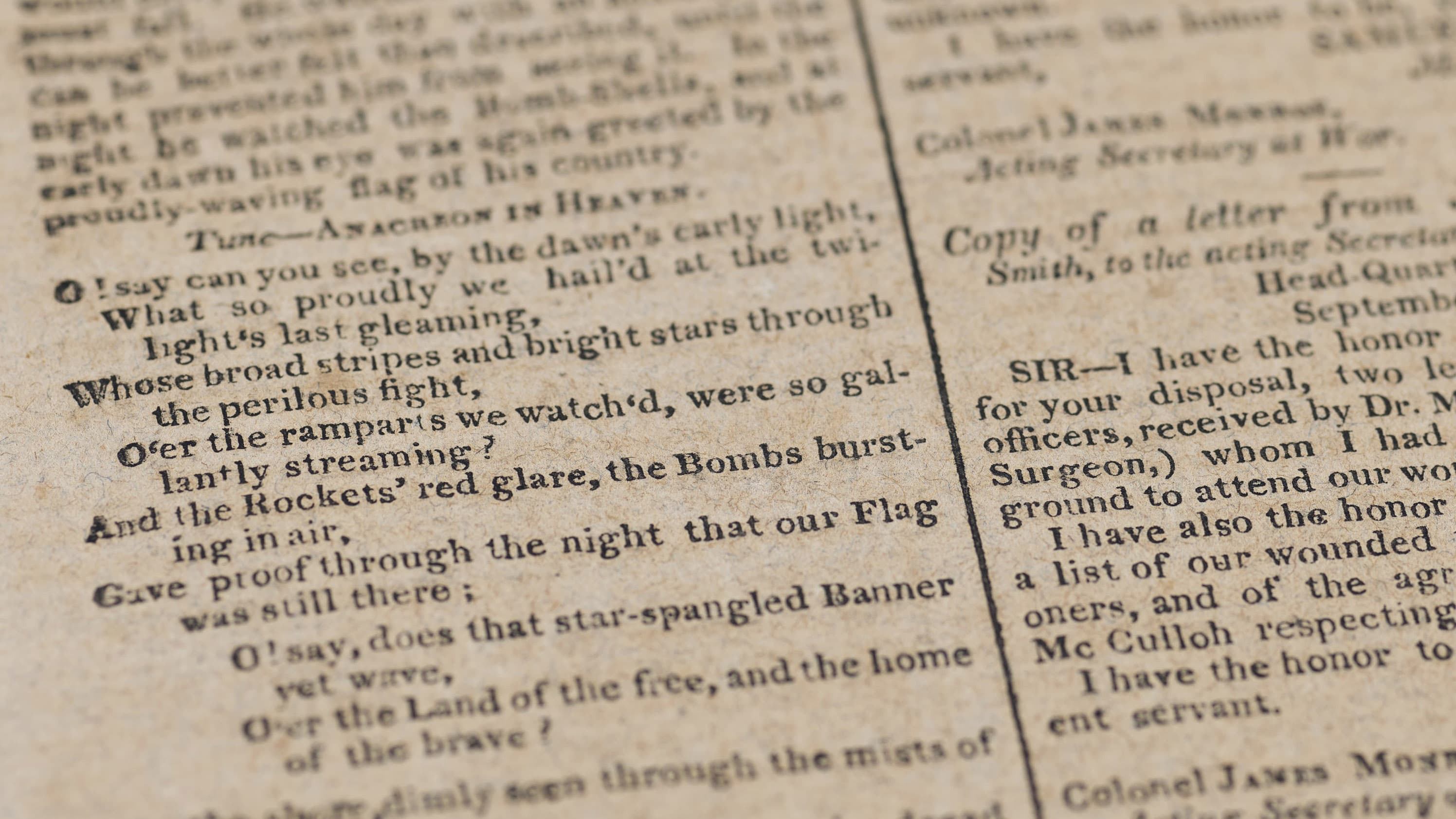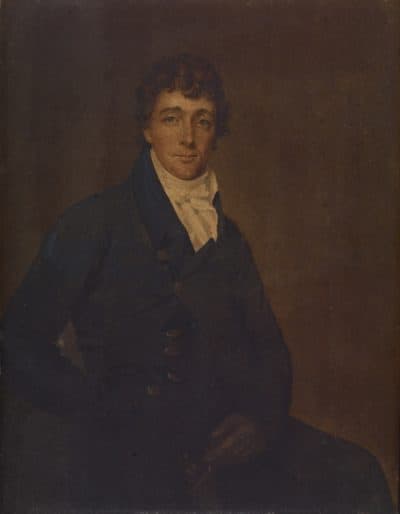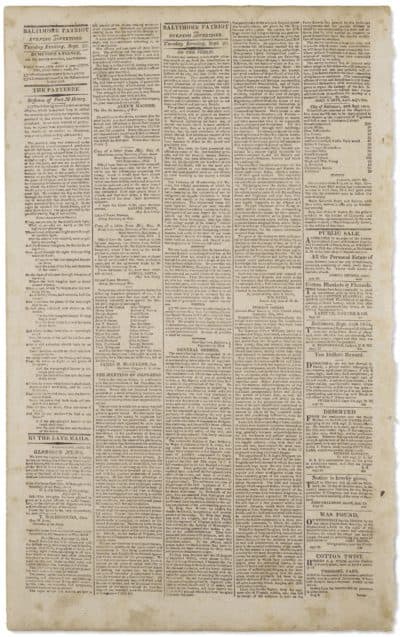Advertisement
First Printing of 'The Star-Spangled Banner' Goes To Auction At A Fraught Time

We all know the words penned by Francis Scott Key more than 200 years ago. As school children, we sang about the dawn's early light and the rocket's red glare. We've heard countless celebrities and thousands of sports fans belt out how — even through it all — our flag was still there.
Professional football players (and many others) have refused to participate in that tradition as an act of cultural dissent against racial oppression and police-involved killings of unarmed black Americans. Now, after a pain-filled weekend of peaceful-turned-violent protests against enduring racial injustice and deadly inequality, people across the nation are stoking questions about what freedom and patriotism even mean in 2020.

Yes, it's an undeniably complicated time for one of the original newspaper printings of Key's lyrics to be going up for auction online at Christie's auction house. It opens for bidding from June 2 through June 18.
The American Antiquarian Society in Worcester owns two of the three original copies known to exist. Interim vice president for collections Lauren Hewes said she and her colleagues never would've anticipated the country would be battling both a pandemic and widespread civil unrest on the eve of the sale of their September 20, 1814 issue of The Baltimore Patriot & Evening Advertiser.
“When we look at it today through the lens of all of the decades we see it quite differently than somebody would have standing on the street corner in Baltimore on that date,” she said. “And that is the power of historic material. It helps you to compress time. It helps you to learn about the past and also about yourself.”
Key's patriotic ballad debuted just three days after the 35-year-old lawyer from Maryland wrote it.
“The way it was intended in 1814 is really different than the way people think of the national anthem right now,” Hewes said. “What does the national anthem mean to any of us? I think would be very different based on who you ask today.”
In 1814 the U.S. was a young nation divided in part by the brutal War of 1812 with the United Kingdom. Key witnessed the soldiers fighting in the Battle of Fort McHenry from a distance, aboard a ship. After the smoke cleared, he was inspired by the image of the American Flag still flying overhead.
Advertisement
“I think he spent a pretty shaky night on the frigate in the harbor watching the bombardment of the fort,” Hewes mused. “And that definitely comes through – his overwhelming feeling of relief that the flag was still there in the morning.”

For Hewes the surviving copy of The Baltimore Patriot & Evening Advertiser is a valuable portal into issues that are still divisive, rattling, and sadly relevant today.
“It has the news, it has — in this case — the lyrics to Francis Scott Key's first printing of what will become the national anthem,” she said, “It also has advertisements for slavery in the same document. So the document itself is a fraught piece of history.”
According to Hewes, scholars still debate over whether Key was addressing the issue of slavery with his words. As a historian, her goal is to connect people to objects from the past and to history.
“It tells the story of the United States in four pages, as it was on September 14th, 1814, without apology,” she said, “It is what it is for that date.”
Hewes said Key hoped his ballad would circulate widely on the American side of the War of 1812. “And remember, we're quite young here as a nation, you know, this is our first test,” she said, “Our capital was burned by the British. We were invaded by the British. It's a very complicated war, which he sums up – really not the whole war – but the feeling of being at war as a young nation.”
The author's tune wouldn't become the national anthem until 1931. The newspaper entered the American Antiquarian Society's collection in 1931. It holds the largest trove of physical American newspapers in existence — about two million issues — and the staff acquires about 15,000 each year through gifts and purchase. When they confirmed they had duplicate copies of the 1814 Baltimore Patriot & Evening Advertiser they made the decision to sell it.
“We take that responsibility very seriously, and so having two of the same thing is an opportunity for us to sell the duplicate and use the proceeds to build the collection further in other directions where we have gaps,” Hewes said, “And that's the intention with this.”
Planning for the sale began about five years ago. Negotiations with Christie's unfolded over the past three years or so, Hews said.
The auction house estimates the document's value at between $300,000 and $500,000. Hewes hopes the rarefied object goes to someone who understands its worth, wants to tell its story and doesn't think of it as a “trophy.”
Ideally for her, the buyer would be interested in music history, the War of 1812, American history writ large or maybe journalism. Hewes sees the potential. “And I hope that whoever purchases it can give it context,” she said.
